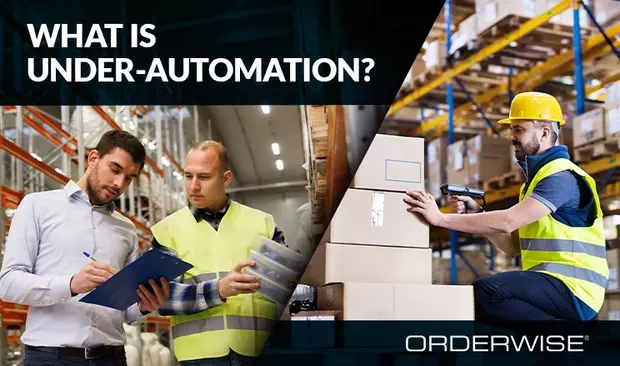What is under-automation?

What is under-automation?
By our own definition, “under-automation” describes a problem that thousands of businesses are experiencing across the UK right now. From manufacturers to retailers, industries of all sizes are missing key opportunities to save time, money, and resource with the support of the right technology.
Modern and purpose-built automation serves a host of purposes that go far beyond simply speeding up processes and reducing manual data entry. It’s a fundamental basis for increasing productivity, empowering staff, and creating a stable infrastructure for years to come.
Under-automation is the problem that occurs when a business is still relying on outdated and disjointed technology. And the simple reality is, outdated legacy systems and workload automation tools are not only hard to stay on top of, but hard to cross between different tools and platforms. As a result, they’re often used in isolation from the other processes and systems a business has in place. Short term, this means manual handoffs between isolated automated activities to keep operations running smoothly. Long term, businesses can expect to experience some of the following:
- An underutilised workforce. Staff become tired, frustrated, and disengaged with older systems. Today’s younger workforce desire user-friendly software solutions. Automation also means giving more meaningful, less monotonous work to employees.
- Inadequate levels of customer care. A lack of connectivity between ecommerce channels, customer service teams and warehouse staff can often lead to a compromised service for customers. Extra strain is then applied on customer support teams.
- Inaccurate reporting and decision making. Without integrated data from all departments being fed into quality reporting tools, decision making can become slow and inconsistent. No clear or immediate connection is being made between the efforts or shortcomings of different teams.
- Growth stunts. Operations may keep running, but the technical debt built up from so many workarounds and fixes builds up. Less time is spent on innovation and growth, and instead spent firefighting different bottlenecks, from different teams, all with their own ways of working.
Why do companies still under-automate?
It’s common for businesses relying heavily on legacy or disjointed systems to view upgrades or business-wide automation as a luxury they either can’t afford, or don’t have the time for.
This misconception that larger companies can only afford to automate so many of their processes because of their success, rather than automation being the making of the that success, is one that continues to hold businesses back. The simple fact is, highly automated companies are 6 times more likely to see revenue growth of at least 15%.1
Thinkautomation also reported that implementing automation generates a return on investment of up to 200% in the first year alone, mainly in labour savings.2
Of course, no business will have the same automation journey, but there are several things we can learn from high-growth companies making purpose-built automation a priority:
- Automation frees businesses and people up to focus on more worthwhile tasks.
- Any fast-growing business needs a fast-hiring process. Automation closes that gap between what jobs need to be done, and what people are available to do it.
- If identified, automation provides the opportunity for hundreds of ‘quick wins’ across your processes. These are the jobs you never imagined you could automate until an experienced provider shows you.
- Automation doesn’t need to be done all at once. It can be done gradually, keeping costs managed, and stakeholders happy.
- Automation provides a huge plethora of valuable data about your business. Most companies find this data just as a valuable, if not more so, than the savings and efficiencies of automation.
Preparing your business for an autonomous future
In the last two years, automation became a critical part of survival for businesses in the UK. Being “too busy” to implement high-level automation went from an excuse to a critical part of surviving the pandemic. Businesses were forced to adapt, and despite this shift being one of reluctance for some, it laid an important foundation. A foundation that would harbour growth, reduce inefficiencies, and for many, create an unshakable infrastructure for the future.
We know it’s not an easy time to be in business. As well as the pressure of staying on track of digital transformations, companies must also combat the fallout of the pandemic and Brexit. Businesses must bring their automation together and provide teams the ability to utilise automation across multiple platforms in hybrid environments—without the need for manual intervention. They also need to be able to roll automation out wherever and whenever it’s needed, as simply as possible. Workload automation delivered through platforms such as OrderWise provides this level of increased agility.
Over the course of thirty years, OrderWise has built a system to support the automation needs of over a thousand businesses across the UK. From stock control and ecommerce to sales and accounts, we provide the tools to drive your business forward. If you want to analyse potential areas of under-automation in your business talk to one of our specialists today about the solutions available to you.